Planning a trip to Japan? Get ready for an unforgettable adventure. With SIXT.VN as your travel advisor, navigating the nuances of Japanese culture and logistics becomes a breeze. Discover insider tips, essential phrases, and practical advice to maximize your experience in the land of the rising sun. Whether it’s your first visit or a return journey, we’ll help you prepare for your trip and ensure you make the most of your time with sightseeing suggestions, money-saving hacks and relaxation tips. Let’s dive into the best Advice For Travelling To Japan.
1. When Is The Best Time To Visit Japan?
Japan is a fantastic year-round destination. Each season offers unique attractions, from the delicate cherry blossoms in spring to vibrant summer festivals, breathtaking autumn foliage, and fantastic winter skiing. No matter when you visit, you’ll find lots to enjoy.
The ideal time depends on your weather and crowd preferences and the experiences you want. Each season has different requirements for planning and packing. The temperature varies greatly depending on where you are visiting, so check the forecast for your specific locations.
2. What Are The Best Destinations In Japan To Visit?
Japan has a remarkable array of destinations to select from, each offering a wide range of activities.
To maximize your trip, arrange your itinerary well in advance. Accommodation and event tickets sell out quickly, particularly during peak travel seasons. Planning ahead will help you avoid frustration.
Check out our sample two-week itinerary and our unique immersive sample Japan itineraries for inspiration.
3. What Unique Experiences Should I Consider While Visiting Japan?
Visiting Japan allows you to enjoy genuinely remarkable and unforgettable experiences. There are too many to fit into one trip.
Some of our top experiences are listed below to inspire you. See our article on 25 Japan experiences to add to your bucket list for more ideas.
 Takefue Ryokan Kurokawa Onsen Kyushu Japan
Takefue Ryokan Kurokawa Onsen Kyushu Japan
4. Why Should I Venture Outside The Big Cities When Visiting Japan?
When you think of Japan, the famous cities of Tokyo, Kyoto, and Osaka come to mind. These are fantastic places to visit, but they do not fully represent what the country has to offer.
Explore some of the more off-the-beaten-path destinations to gain a deeper understanding of Japan, particularly if this is not your first visit. Head north to Hokkaido’s wilds, visit Shikoku’s tranquil villages, or explore Okinawa’s stunning islands. You will not only avoid the crowds but also witness some of the most genuine and memorable aspects of Japanese culture.
5. What Is A Ryokan And Why Should I Spend A Night In One?
A ryokan is a traditional Japanese-style inn, and we highly recommend spending a night or two in one during your visit. Ryokan are very different from traditional hotels and an essential part of the Japanese experience.
Most are located in the countryside, offering a perfect setting to unwind, rejuvenate, and enjoy the best of Japanese hospitality. You will enjoy an experience unlike any other with minimalist tatami mat rooms, yukata robes, kaiseki meals, onsen baths, and futon bedding.
Take a virtual tour of a ryokan for a more detailed look.
6. Where Can I Discover True Relaxation In Japan?
Japanese onsen (hot springs) resorts offer the ultimate in luxury and relaxation. Whether you choose a historic indoor bath or a remote outdoor location surrounded by breathtaking natural scenery, they provide a sublime, authentic cultural experience.
Here are some etiquette tips to consider:
- Wash thoroughly before entering the onsen to keep the water clean.
- Keep towels, toiletries, and clothing out of the water.
- If you are not used to hot water, do not stay in it for too long, and be careful when exiting. High temperatures can cause you to feel lightheaded.
- Consider renting a private onsen if you are concerned about being naked in front of others. Many high-end ryokan provide private baths attached to the rooms, and others offer hourly rentals.
7. What Is A Buddhist Temple And Why Should I Stay In One?
Staying at a Buddhist temple is an excellent escape from everyday life and a spiritual retreat.
Visitors can get a taste of Buddhist life by staying at a shukubo (temple lodging), where they can participate in early morning prayers, meditation classes, and traditional Buddhist vegetarian cuisine. Some stays also offer the opportunity to assist with temple work as a form of active meditation.
Mount Koya is one of the best places to experience temple life. With over 100 Buddhist temples and the otherworldly Okunoin Cemetery, it is one of Japan’s most sacred destinations and an ideal place to immerse yourself in Zen.
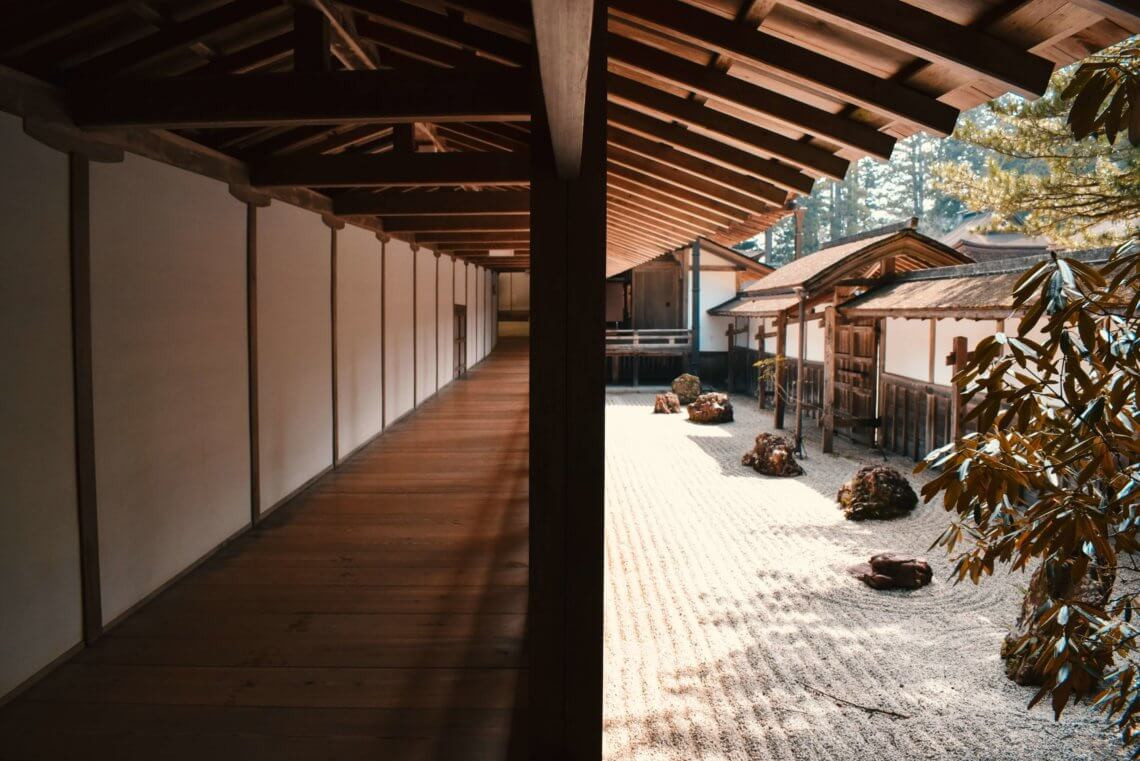 Zen Garden Kongbuji Temple Mount Koya Japan
Zen Garden Kongbuji Temple Mount Koya Japan
8. What Is A Matsuri And Why Should I Attend One?
Japan’s matsuri (festivals) are nothing short of spectacular. Rich in tradition, color, and energy, they showcase the country at its most dynamic and vibrant.
Attending a festival will be an unforgettable experience, providing an opportunity to sample authentic and seasonal street food, witness unique traditions, and immerse yourself in an important part of Japanese life.
Festivals occur throughout the year across the country, so you should be able to find at least one to attend regardless of your travel dates and itinerary. Our list of Japan’s best festivals is a great place to start.
9. Why Should I Attend A Ball Game Or Sumo Tournament In Japan?
Consider attending a sporting event such as baseball or sumo to gain insight into a very different side of Japanese culture, even if you are not a sports fan.
Sumo tournaments are all-day events steeped in ancient tradition that take place only six times a year. You can also attend a sumo exhibition or morning practice if you cannot attend a tournament.
Baseball is a more modern affair. The games, a Japanese take on an American classic, are lively but very friendly, with enthusiastic fans singing and cheering in unison from start to finish. Players frequently have their personal fight songs, and each team has unique celebrations involving props such as balloons and mini umbrellas.
Games are held several days a week during the season, and tickets can be purchased online, at the stadium, or from convenience stores.
10. Why Should I Take A Walk In The Woods While Visiting Japan?
Japan is approximately 68% forested and 73% mountainous, making it easy to escape the city’s noise and lights and spend time in nature. Grab your hiking shoes and bento box lunch, and get out there.
Japanese culture emphasizes harmony with and appreciation for the natural world, and hiking is a popular pastime for people of all ages. You’ll find easily accessible and scenic trails to explore in almost any city. There is something for everyone, from challenging mountain peaks like the iconic Fuji-san to stunning riverside walks. Plus, it’s a great way to burn calories from all the delicious food you’ll be eating.
11. What Should I Know About Passports And Visas Before Visiting Japan?
A crucial part of any overseas travel.
Your passport must be valid for at least six months from the end of your visit, and two to four blank visa pages are recommended.
You might not need a visa. Citizens of these countries can enter Japan without a tourist visa, typically for 90 days. Always check with the Japanese Embassy for the most up-to-date information before you travel.
We also recommend purchasing comprehensive travel insurance to plan for the unexpected.
12. How Important Is It To Learn Some Key Japanese Phrases Before Visiting?
Do not panic. It is entirely possible to travel around Japan without knowing the language. Most Japanese people speak some English, and English-language signage is plentiful in major cities and popular tourist destinations.
Learning a few Japanese phrases can significantly improve your overall travel experience. Japanese people appreciate tourists who try to learn their language, even if only the most basic phrases.
Download the Boutique Japan Tiny Phrasebook to get started with some carefully-selected words and phrases. SIXT.VN offers translation services to help you communicate effectively during your trip.
13. What Is A Japan Rail Pass And Should I Buy One?
The Japan Rail Pass is a discounted train pass available only to tourists. It allows unlimited travel on most JR trains, including the shinkansen (bullet train), for 7, 14, or 21 consecutive days.
It sounds like a great deal, and it may save you money on travel if you are making multiple long-distance journeys. However, depending on your itinerary and preferences, it may not be the best option. Our short guide to the Japan Rail Pass can help you decide. SIXT.VN can assist you in determining whether a Japan Rail Pass is the best option for your travel plans.
14. Should I Travel With Plenty Of Yen When Visiting Japan?
Despite its high-tech reputation, Japan is a very cash-oriented society, so bring plenty of money.
Many bars, markets, small shops, and local restaurants, particularly in rural areas, only accept cash payments. You will most likely need to carry more hard currency than you are accustomed to. Fortunately, Japan is very safe, so you can feel comfortable doing so.
Ideally, you should buy yen in your home country, but you can also exchange money at the airport and currency exchanges in any major city. More and more ATMs are starting to accept international cards, particularly those in convenience stores. Before you leave, get the complete lowdown on cash, cards, and ATMs in Japan.
Notify your bank and credit/debit card provider that you will be abroad to ensure that you can use your cards while away. If you’re unsure how much yen to bring, check out our article: Is Japan expensive?
15. Is It Important To Pack Light When Traveling To Japan?
Navigating Japan is much easier when you only have a small, easily portable bag or suitcase, especially if you are visiting multiple destinations.
If you cannot pack light, skip ahead to the Luggage Forwarding section below.
Most trains have limited space for luggage, and even on the shinkansen, there is no guarantee that you will find space for a large suitcase. Furthermore, stations are frequently crowded, making navigating with large bags difficult. If you cannot find an elevator or escalator, you may have to drag bags up and down stairs.
Limit yourself to a backpack and a small rolling suitcase if possible, and remember to save space for souvenirs because Japan is a shopper’s paradise.
 Traveler with bag
Traveler with bag
16. What Are Some Of The Essential Items I Should Remember To Pack When Traveling To Japan?
We’ve already covered passports, yen, and weather-appropriate clothing, but here are a few more essentials you should not forget:
- A small towel and some hand sanitizer: Some public restrooms in Japan do not have soap, hand towels, or dryers.
- Travel adapters: Most of Japan’s electrical outlets are 2-pronged “Type A” (100 Volt, 50-60 Hz), so bring an appropriate adapter if your devices have a different plug.
- Small gifts from home: These are wonderful for giving to guides and other people you meet during your travels in Japan. Local specialties are ideal.
Check out our complete guide to packing for Japan for more advice on what to bring and what to leave at home.
17. Should I Rent Pocket Wi-Fi While Visiting Japan?
Free Wi-Fi is not as readily available in Japan as you might expect, so we strongly recommend getting a pocket Wi-Fi device for the duration of your stay. Pocket Wi-Fi is a small, mobile hotspot that allows you to connect to the internet from your laptop, tablet, or smartphone from almost anywhere in the country.
It is best to order one well in advance and either pick it up at the airport or have it delivered to your first hotel. Most companies also offer the option of renting a Japanese mobile phone or SIM card for your existing phone (if unlocked), which can save you from paying exorbitant prices if you need to make local calls.
SIXT.VN can help you arrange pocket Wi-Fi rentals and SIM cards to stay connected while travelling in Japan.
18. What Apps Should I Download Before Visiting Japan?
You might as well use Pocket Wi-Fi to make your trip go smoothly.
Numerous apps can be helpful during your time in Japan, but here are a few to get you started:
| App Name | Description |
|---|---|
| Google Translate | Translates text and speech in real-time. |
| HyperDia | Train schedules and route planning. |
| Gurunavi | Restaurant finder. |
| Japan Official Travel App | Travel guides and useful tips |
| Maps (Google Maps) | Use offline maps |
19. What Is An IC Card And How Can I Obtain One?
This will add convenience to your time in Japan.
IC cards are rechargeable credit-card-sized passes used to pay fares on various public transport networks with a single tap (similar to London’s Oyster card and New York City’s MetroCard). You won’t have to worry about which ticket to buy or how much the fare will be. Just tap and go.
You will need to purchase paper tickets for the shinkansen and limited express/special express trains. Here is a dedicated article on train travel in Japan for more information.
Japan’s IC cards can be used in other cities besides the one where they were purchased. For example, Tokyo’s PASMO card can also be used in Kyoto. Plus, you can use them to pay for drinks and snacks at most convenience stores and vending machines, making them even more convenient.
20. What Should I Do With My Luggage When I Arrive In Japan?
If you haven’t managed to pack light or have purchased many souvenirs, you might find it difficult to travel around Japan with a large suitcase.
Fortunately, Japan has a solution: ship your bags separately with the wonderful takuhaibin luggage forwarding service. This overnight service (longer if shipping to airports or far-flung destinations like Okinawa and Hokkaido where ferry travel is involved) will have your bags ready and waiting for you upon arrival. Your hotel or ryokan will gladly arrange this for you.
Alternatively, you can use Japan’s numerous coin lockers if you only need somewhere to store your bags for a few hours. Coin lockers, commonly found at train stations and shopping malls, are safe, affordable, and convenient places to leave your bags while sightseeing.
SIXT.VN can arrange luggage forwarding services for you to travel comfortably and hassle-free.
21. How Can I Take Advantage Of Conbini (Convenience Stores) While Traveling In Japan?
Japan’s legendary convenience stores (known locally as conbini) make life easier for travelers and locals.
Conbini include ATMs to withdraw cash using your overseas credit or debit card, and arrange luggage forwarding if staying somewhere like an AirBnB rather than a hotel. They offer an amazing array of food, drinks, and snacks, including reasonably priced coffee. They also sell a fantastic range of travel goods and toiletries in case you forget something.
You can also purchase tickets for events such as baseball games and attractions such as Universal Studios Japan in conbini. You can even pay for domestic flights and bus tickets, though not always in English.
The best part is that there is one on almost every corner.
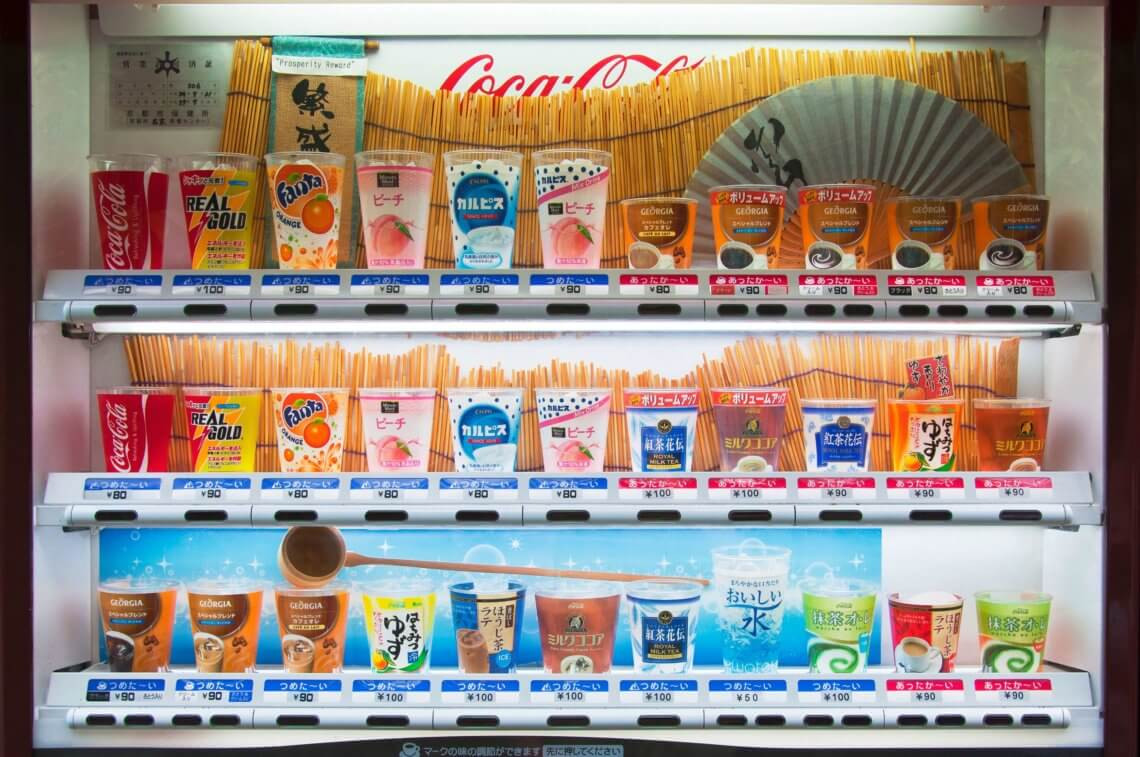 jidoki vending machine japan drinks
jidoki vending machine japan drinks
22. How Should I Handle Litter While Visiting Japan?
Japan has surprisingly few rubbish bins for such a clean country.
You’ll find them in convenience stores and train stations, but there are few on the street. You won’t see many places to dispose of trash, except near vending machines or in public areas like parks. You may find yourself holding onto your trash for longer than expected, possibly until you return to your hotel.
Bring a plastic bag or reusable tote to store trash while out and about. It is a small tip, but it can make a big difference when you have a handful of trash and nowhere to put it.
More and more Japanese supermarkets are charging a couple of yen for grocery bags, so bringing your own can save you money and the environment.
23. How Can I Avoid Crowds While Sightseeing In Japan?
Many of Japan’s top sightseeing spots can get crowded. Kyoto attracts large crowds to its most famous locations, including Fushimi Inari, Kiyomizu-dera, and Kinkaku-ji.
Visit during quieter times of the day, such as early morning or late evening, to avoid the worst crowds. The views are just as stunning, but you will have to share them with fewer people.
SIXT.VN can advise you on the best times to visit popular attractions to avoid crowds.
24. Is Tipping Expected In Japan?
Tipping is unheard of in Japan, despite the phenomenal level of customer service. If you try to leave a tip, it will almost certainly be declined, which could lead to an awkward situation.
One alternative is to bring a small gift from your home country to show your appreciation to someone like a private guide or interpreter. If you want to offer a monetary tip, do so in a way that aligns with Japan’s tipping etiquette to avoid causing embarrassment or appearing rude.
25. Why Is It Important To Remove My Shoes In Certain Situations While Visiting Japan?
You must remove your shoes before entering homes, ryokan, temples, traditional restaurants, and any area with tatami matting. Wear shoes that slip on and off easily because you’ll be doing it frequently.
Some places provide indoor slippers, but not always. It’s generally best to wear socks on tatami to protect the matting. As a result, wear decent, hole-free socks or bring a pair.
It will usually be obvious when you need to remove your shoes: look for indicators such as a lower entrance hall, tatami flooring, slippers on the floor, and shoe storage shelves. Ask if you’re unsure.
26. What Should I Know About Bathroom Slippers While Visiting Japan?
You may notice that some places, such as homes and ryokan, have slippers for use only in the bathroom.
When you enter the bathroom, leave your regular slippers outside the door and switch to the bathroom slippers. Because these should only be worn in the bathroom, remember to switch back when you leave. This common faux pas may elicit laughter from the locals.
27. How Do I Use Japanese Toilets And What Are The Functions Of The Buttons?
Japan is known for its fancy toilets, which have an array of buttons to control various functions. These functions include small and large flushes, a bidet, a dryer, and an automatic lid opener.
The controls are sometimes labeled in English and Japanese, but you will often have to decipher the pictures and kanji characters. The icons should be reasonably self-explanatory, but you can search for a sample image online if you are nervous.
28. How Do Taxi Doors Operate In Japan?
Japan is famous for technology and efficiency, so taxi doors open automatically.
When you hail a taxi, the driver will pull up, and the rear door will automatically open for you. Once inside, it will close automatically behind you.
It is a small detail to be aware of, but one that may save you from being surprised.
29. Should I Bow In Japan?
Bowing is one of the most common Japanese customs, used in various situations, including greeting, thanking, and apologizing. The deeper the bow, the more respectful it is.
Most Japanese people understand that bowing is uncommon in the West and will not scrutinize your efforts. If you prefer to shake hands, that is most likely acceptable as well.
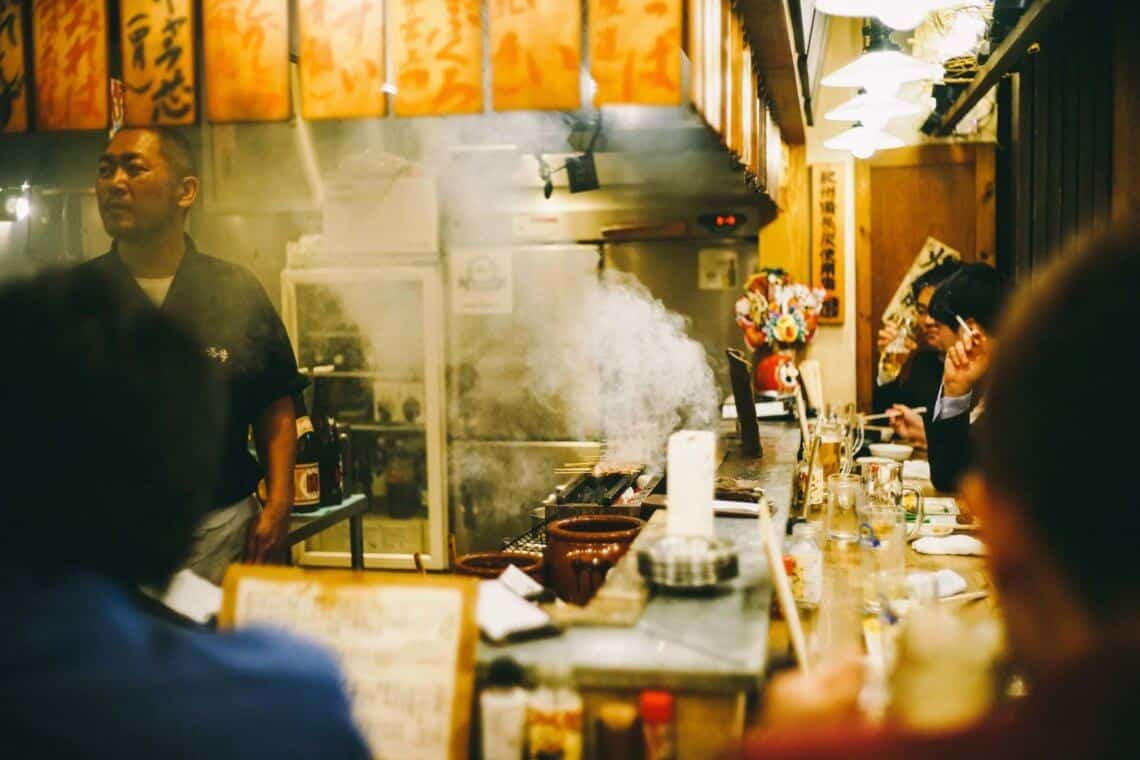 izakaya shinjuku tokyo japan
izakaya shinjuku tokyo japan
30. Are There Any Restrictions On Smoking In Japan?
If you smoke, you will find Japan more lenient than your home country when it comes to cigarettes. Smoking is still permitted inside many traditional restaurants and bars. Train stations and other public areas often have indoor smoking rooms where you can light up. Smoking is usually not permitted on busy sidewalks, so look for a designated smoking area.
If you don’t smoke, you may find the situation in Japan frustrating. However, a growing number of bars and restaurants are thankfully becoming smoke-free. Check their website or signs in the window to find non-smoking establishments.
31. Should I Cover My Tattoos In Japan?
Tattoos are still associated with organized crime in Japan. You are unlikely to be mistaken for a member of the yakuza as a foreigner. However, you may need to cover your tattoos if you want to use public facilities such as gyms, swimming pools, and onsen (hot spring baths).
If your tattoos are too large or difficult to cover, use a private onsen or search online for a tattoo-friendly one. These are becoming more common, especially among businesses catering to foreign visitors.
32. How Can I Be Respectful On Public Transport In Japan?
Japanese society emphasizes politeness, and the train network is one of the places where this is most evident. Conductors bow to you, carriages are spotless, and departures are so punctual that you can set your watch by them.
Keep these simple points in mind to fit in:
- Do not talk on your phone on public transportation. If you need to make or answer a call on the train, use the small compartments between carriages.
- Queue in the designated areas. Painted lines, numbers, and symbols on the ground indicate where to wait on the train platform. Allow people to exit the train before boarding.
- Take photos out the window, recline your seat on the shinkansen, and grab a delicious bento box lunch from the station or beverage cart. Trains are a great place to unwind as you glide seamlessly to your next destination.
33. How Should I Handle Money In Japan?
Money is rarely passed directly from hand to hand in Japan.
When purchasing something in a shop, restaurant, or bar, you’ll notice a small tray next to the cash register. It may be on the counter or attached to the cash register. Place your money or credit/debit card in the tray instead of handing it to the cashier.
The cashier will typically place your change in the money tray after completing the transaction. When paying for services in places like hotels, cinemas, and onsen, the same system applies.
Another common practice is to place cash in an envelope rather than passing it openly and using both hands to pass it.
34. What Food Should I Try While Visiting Japan?
Japan is a foodie’s paradise. From Michelin-standard delights to authentic local cuisine, it deserves its reputation as a top culinary mecca. Here are some tips to ensure you make the most of Japan’s edible delights during your trip:
- Try All the Food!
Splurge on a multi-course, seasonal kaiseki meal or the vegan/vegetarian version known as shojin ryori for a truly high-end experience. Head to an izakaya to sample an eclectic variety of Japanese food in one place. These casual Japanese-style gastropubs are a must-visit and one of the best ways to immerse yourself in local culture.
There is a wealth of delicious Japanese foods to try, from well-known classics such as sushi and ramen to lesser-known but no less delicious dishes such as soba and karaage.
There are also countless local specialties to enjoy as you visit different cities. If your itinerary includes several destinations, investigate. Check out our recommendations for must-eat foods in Kyoto, Osaka, and Fukuoka to get you started.
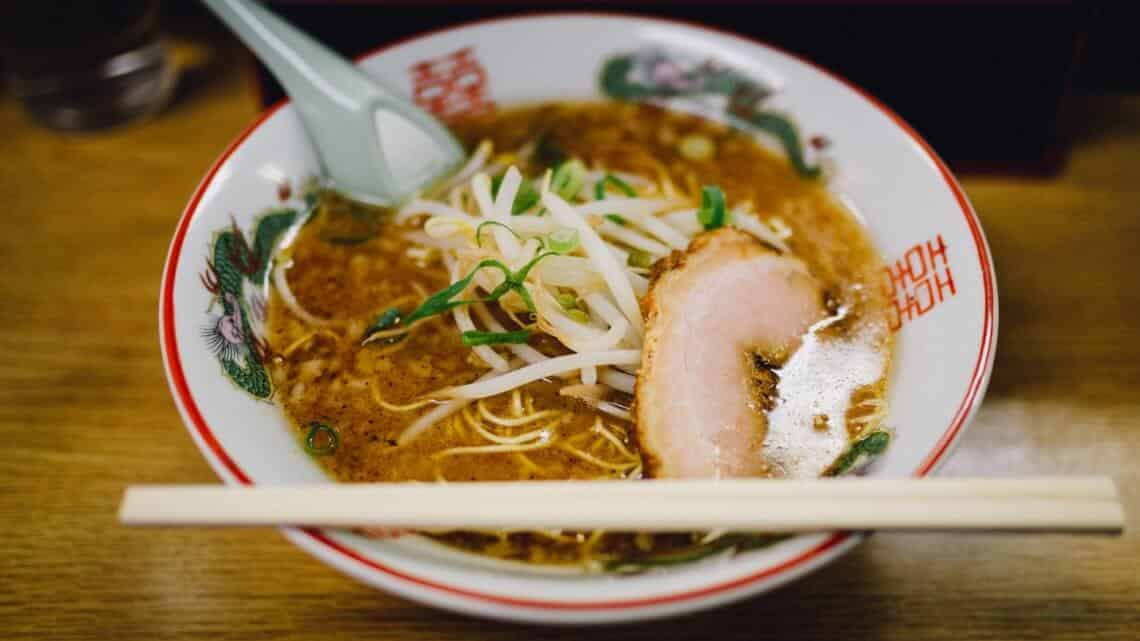 ramen japan
ramen japan
35. Is There Any Chopstick Etiquette I Should Be Aware Of?
Even if you consider yourself an expert with chopsticks, there are some etiquette rules to remember:
- Never point your chopsticks at another person, wave them in the air, or spear food with them.
- Do not stick your chopsticks into a bowl of rice, or pass food from chopsticks to chopsticks, as this is reminiscent of funeral rites.
- When serving yourself from a communal dish, use the opposite end of your chopsticks (not the end you put in your mouth).
If you can’t use chopsticks, ask for a knife and fork.
36. How Should I Plan Ahead If I Have Dietary Requirements When Traveling To Japan?
Traveling through Japan with special dietary requirements is possible if you plan ahead.
Unfortunately, dietary restrictions are not as well understood in Japan as in some other countries and cannot always be accommodated. However, this advice will make your life easier:
- To avoid misunderstandings, clearly state what you can and cannot eat (rather than stating that you are vegan or gluten-free, for example).
- Give plenty of advance notice when asking a restaurant or ryokan to alter their menu, as it will take time and preparation.
- Learn key Japanese vocabulary or carry a phrase card with you. Learn phrases relating to your dietary needs such as:
- ‘I’m allergic to ___.’
- ‘I can’t eat ___.’
- ‘Does this contain ___?’
- Research! The internet has a wealth of information and advice for travelers with dietary restrictions in Japan. There is an ever-increasing number of websites about being vegan/vegetarian/gluten-free/etc. in Japan, which can be absolute life-savers.
SIXT.VN can assist you in locating restaurants and accommodations that cater to your dietary requirements.
37. Why Should I Go Sake Tasting While Visiting Japan?
No list of Japan travel tips would be complete without sake.
The best way to appreciate sake is to drink it. Try a sake tasting experience or a brewery tour for a crash course if you’re unsure where to begin. Another option is to ask the bar or restaurant staff for recommendations.
In Japanese, the word ‘sake’ refers to all alcoholic drinks in general. Use the word ‘nihonshu’ when you order, and you’re sure to impress. If you’re drinking with a group, always fill up other people’s glasses, not your own, and they’ll do the same for you.
Take a look at our Sake 101 guide for a longer primer on Japan’s national drink. Consider branching out into shochu for something different.
While Japan is best known for sake, it also has an internationally acclaimed whisky industry. You can visit several Japanese whisky distilleries across the country for a glimpse behind the scenes and a tasting, as well as a plethora of specialty whisky bars.
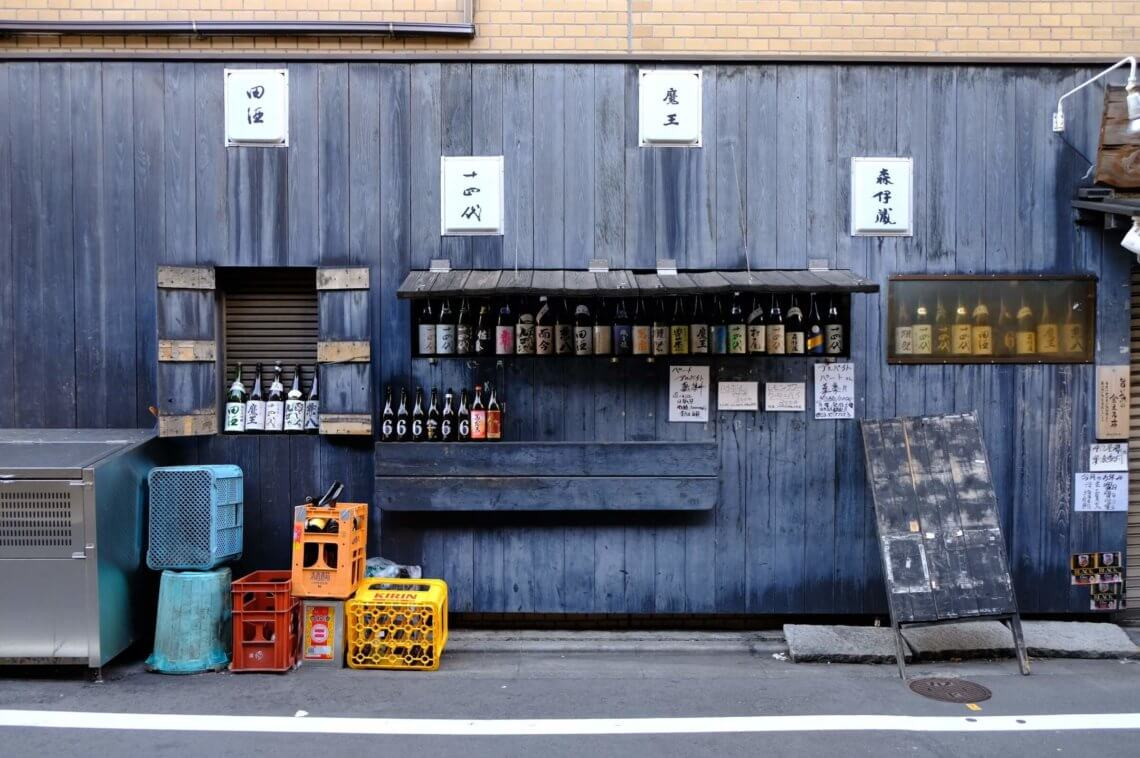 sake display Kamimeguro, Tokyo, Japan
sake display Kamimeguro, Tokyo, Japan
38. Why Should I Attend A Tea Ceremony While Visiting Japan?
Japan has one of the world’s most venerable tea cultures, most evident in the traditional tea ceremony.
Participating in tea ceremonies is a wonderful Japanese experience. It is not simply a way to learn more about preparing and serving tea, but also an opportunity to take a break from the hustle and bustle of everyday life and enjoy authentic Japanese hospitality. Conducted using matcha, a high-quality, finely ground powder made from shade-grown green tea plants.
You will not be expected to know the etiquette of the tea ceremony; that’s part of what you’re there to learn. Wear nice socks and comfortable clothes because you will likely be in a tatami room and must remove your shoes and sit on the floor.
39. What Are Some Other Types Of Tea To Explore While Visiting Japan?
Matcha may be the most famous, but it is not the only tea in Japan that you can explore.
If you’re a tea lover, try all the varieties of tea available. Japan has a tea for every taste and occasion, from grassy sencha and top-quality gyokuro to roasted hojicha and brown rice-laden genmaicha. Besides tea ceremonies, you can visit tea houses for tastings and tea plantations for tours.
Tea leaves make an ideal souvenir, allowing you to bring a taste of Japan home.
Japan also has a booming specialty coffee scene if a cup of joe is more your style.
 bear pond espresso shimokitazawa tokyo japan
bear pond espresso shimokitazawa tokyo japan
FAQ About Advice For Traveling To Japan:
1. What are the best months to travel to Japan to avoid crowds?
- Consider visiting during the shoulder seasons (March-May and September-November) for pleasant weather and fewer tourists compared to peak seasons like summer and cherry blossom season.
2. Is it necessary to learn Japanese before traveling to Japan?
- While it’s not essential, knowing basic Japanese phrases can significantly enhance your travel experience and show respect for the local culture. SIXT.VN can provide translation assistance if needed.
3. How can I stay connected to the internet in Japan?
- Renting a pocket Wi-Fi device or purchasing a local SIM card are convenient options for staying connected to the internet throughout your trip. SIXT.VN offers pocket Wi-Fi rental services for travelers.
4. What are some must-try dishes in Japan?
- Japan offers a diverse culinary scene. Some must-try dishes include sushi, ramen, tempura, okonomiyaki, and yakitori.
5. What is the best way to get around Japan efficiently?
- The Japan Rail Pass is a cost-effective option for long-distance travel on bullet trains (shinkansen) and other JR lines. IC cards like Suica or Pasmo are convenient for local transportation in major cities.
6. What are some cultural etiquette tips to keep in mind while traveling in Japan?
- Avoid loud talking on public transport, refrain from tipping, remove shoes when entering homes or traditional establishments, and be mindful of using chopsticks correctly.
7. Are credit cards widely accepted in Japan?
- While credit cards are becoming more widely accepted, it’s still advisable to carry cash, especially when visiting smaller establishments and rural areas.
8. What are some popular day trips from Tokyo?
- Popular day trips from Tokyo include Hakone for scenic views of Mount Fuji, Nikko for historical temples and shrines, and Kamakura for coastal scenery and the iconic Great Buddha statue.
9. What should I do if I encounter a language barrier in Japan?
- Utilize translation apps on your smartphone, carry a phrasebook, and don’t hesitate to use gestures or draw pictures to communicate. Most Japanese people are patient and willing to help.
10. How can SIXT.VN enhance my travel experience in Japan?
- SIXT.VN offers personalized travel consulting, airport transfer, hotel booking, tour tickets, air tickets and comprehensive travel package so you can enjoy a hassle-free trip.
Ready To Book Your Trip To Japan?
Hopefully, these Japan travel tips have helped you in planning and preparing for your trip.
Whether you usually plan your own trips, or typically work with a destination expert, planning a trip to Japan can seem overwhelming.
At SIXT.VN, our specialty is crafting completely customized trips for travelers seeking unique, authentic experiences.
If you are interested in learning more about working with us, please feel free to contact us today.
Address: 260 Cau Giay, Hanoi, Vietnam
Hotline/Whatsapp: +84 986 244 358
Website: SIXT.VN
According to research from [Japan National Tourism Organization], in [2023], [personalized travel consulting] provides [stress-free travel experience].
SIXT.VN is your top choice for stress-free personalized travel consulting with Z%.



